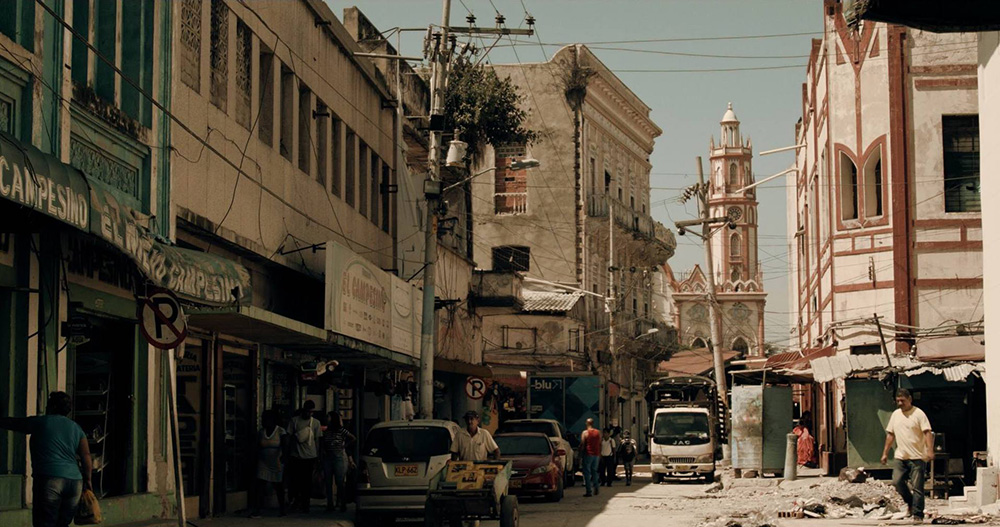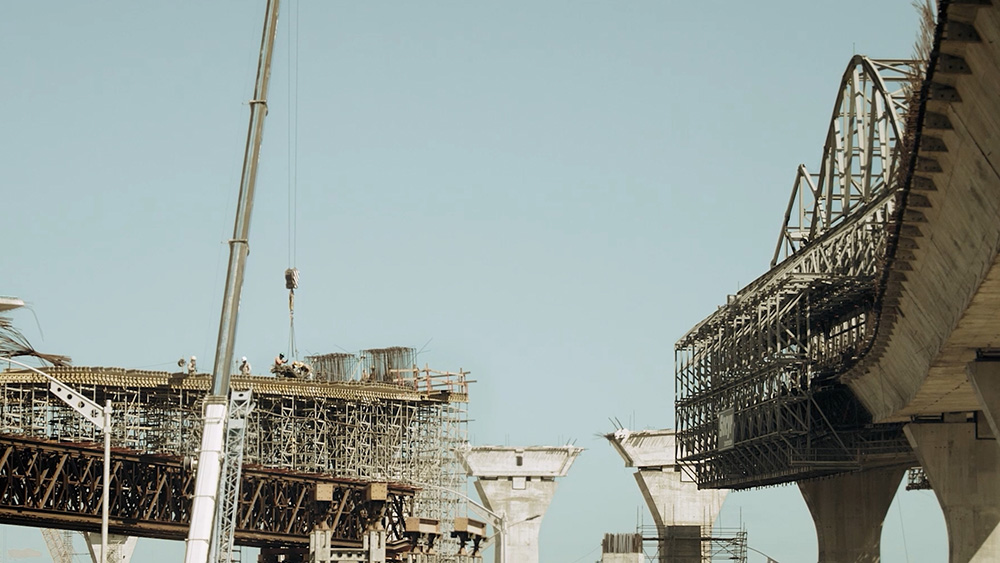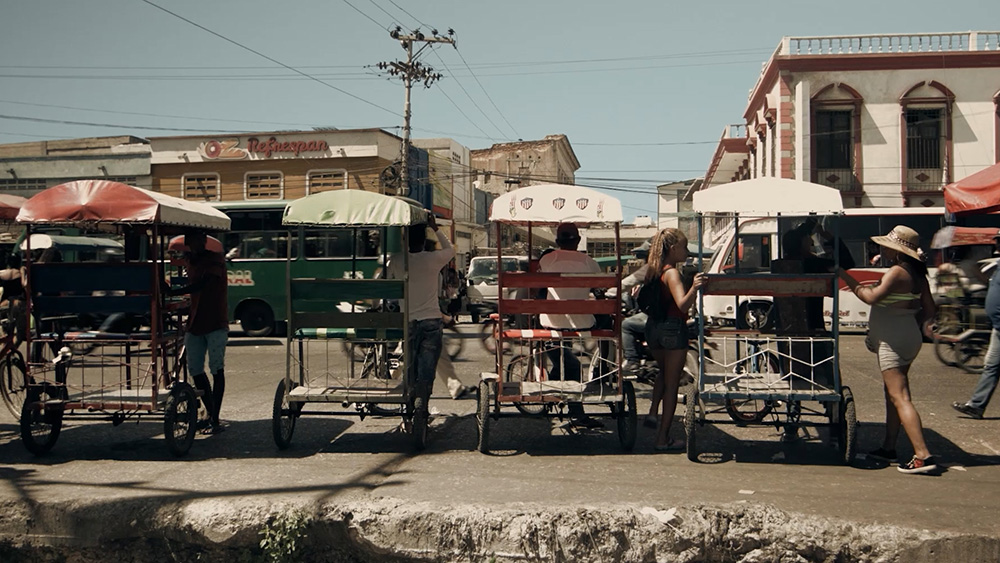Backed by the sun rising over the Colombian city of Barranquilla, we are given a question: “What’s behind that mask?” That is, what is behind the reputation of the city as the host of their eponymous carnival? This question may appear straightforward, but director Alberto de la Espriella reveals it as quite the opposite—unearthing the city’s longstanding ideology of being a place with “no past”, instead forever looking to the future.
Bearing a bold, punchy, and specific title framed as it is, one’s mind is immediately thrown towards the greats of the city symphony genre—Manhatta, Man with a Movie Camera and, of course, Berlin: Symphony of a Great City. But while Roots of a Rising City uses clippings of inspiration from this bygone genre to guide its inquiry into Barranquilla, it is something different. This is for one simple reason: rhythm.
City Symphonies experienced their heyday at the very start of the 20th century, taking the rapidly modernizing cities of Europe and North America as their protagonists. In these films, viewers are led through streets, industries, dockyards, entertainment districts and more—all the while foregrounding the recent innovations in machinery. As such, the rhythms of vehicles, engines, pistons, and factory machinery, alongside the strikingly mechanical methods of film production, inspired the makers of city symphonies to riff on visual and editorial rhythms. These rhythms became a staple of the genre and provided its namesake of symphonies (remember, these were mainly silent).

Roots of a Rising City is not a modernist city symphony but a contemporary one. That is, it brings the format to the present day—sidelining the pounding rhythms of early machines for the probing social inquisition of today’s world. While this shift in focus does away with much of the genre’s stylistic flair, it reframes the city away from stuff (construction, industry, mechanical buzz) towards the keyword of today: identity. Articulating the question “what’s behind that mask?”, a mask that is the city in its entirety.

This reframing is refreshing, yet it remains anything but conclusive. While this question is central to the film, it is actually delivered in its final moments—pushing for reflection. Yet, as someone who has never visited Barranquilla, I was left with little to ponder. This is because the city’s tug of war between looking to the future and searching for a past came without concrete framing. The little we got of Barranquilla’s past was subtly suggestive. Images of distant petroleum company signs, cigarette boxes, naval ships and black-and-white carnival floats came without concrete context. While quietly confident in their presentation for local audiences, international audiences may find themselves lost in the subtlety and brevity of the imagery—especially when not signposted by the film’s otherwise guiding voiceover.

Coming a century after the first City Symphonies, Roots of a Rising City resurrects the genre. Imbuing it with a contemporary, identity-driven sensibility, albeit while leaving the genre’s visual and editorial flair firmly in the grave. Its brief seven-minute runtime leaves many stones unturned and questions unanswered; but perhaps they are to be more illuminatingly probed in a longer project of the same ilk.





